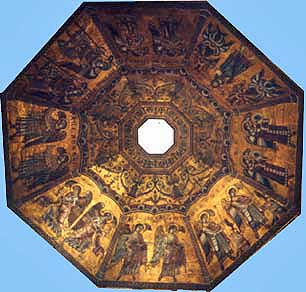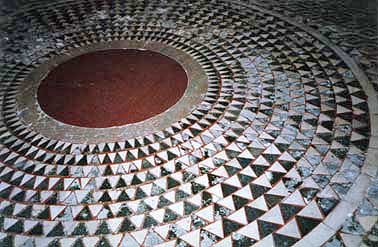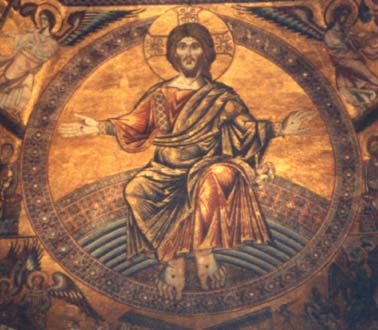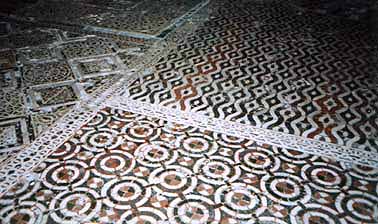|
The octagonal Florence Baptistery, standing in front of the famous Duomo, is one of the oldest buildings in the city. It is renowned for Ghiberti's 15th century bronze "Gates of Paradise", whose creation is sometimes cited as the dawn of the Renaissance. The mosaics on the inside of the Baptistery are of earlier origin. Work began on the arch over the altar in 1225 and continued to cover the entire roof vault during the next hundred years or so. The designs (cartoons) for the mosaics were provided by some of the finest Florentine artists of the pre-Renaissance era, including Coppo di Marcovaldo, who was responsible for the cartoon for this picture of Christ in judgment. |
|
 |
Like the earlier Byzantine mosaics of Ravenna and Venice, ungrouted glass and gold smalti (which catch the light in different ways from different angles) have been used. However, the representations here are more sophisticated. A few of the figures, such as those on the middle storey (the women's gallery), do resemble the Byzantine mosaics, while one panel includes very stylised fish and an octopus which could have been copied from an early Roman mosaic. The mosaics show biblical scenes, arranged in six concentric rings centred on the roof dome. The first ring is decorative, while the second shows Christ (at the top right of this picture) surrounded by angels. The outer rings have images from the Old and New Testaments. |
|
The Baptistery floor is of inlaid marble, in red, green, black and white, in a wide variety of patterns. The earliest are from the beginning of the 12th century, when the Cosmati craftmen specialised in this kind of floor, and were added to in subsequent centuries. The craftsmanship which went into these stone inlays must have contributed to the later development of "Florentine mosaic". Also referred to as pietre dure, this incorporates thin sections of stone and semi-precious materials into pictures which are as detailed as paintings. |
|
 |
Cosmati flooring in Norwich Cathedral |
the joy of shards Mosaics Resource

